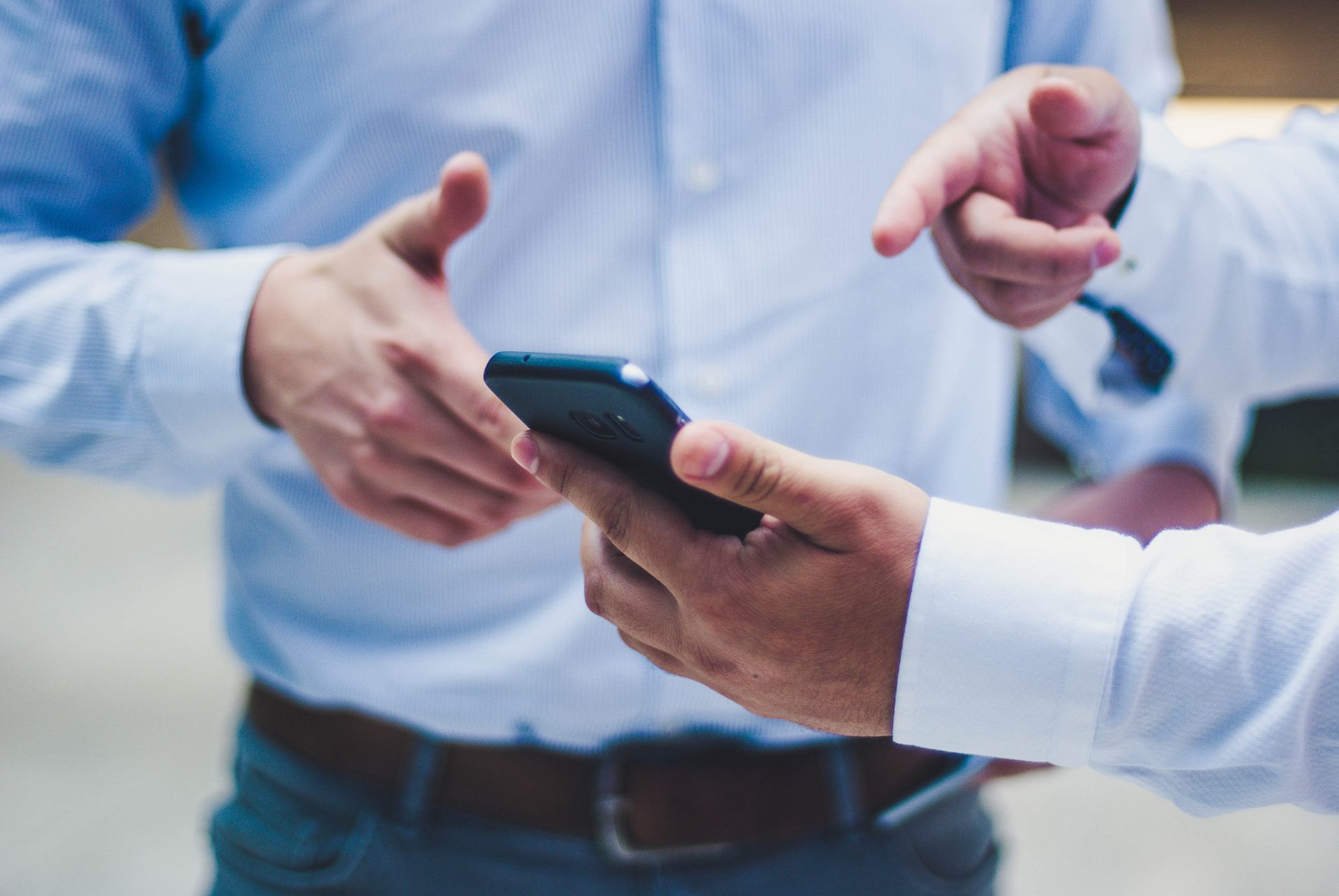In 2023, smartphones have become an essential part of our daily lives. Among the most popular smartphones are the iPhone and Android devices. Both have their own unique features and capabilities, making it difficult for consumers to choose between them. Let’s compare the latest iPhone and Android devices to help you make an informed decision.
Apple’s latest iPhone models, the iPhone 15 and iPhone 15 Pro, boast impressive features such as a powerful A17 Pro chip, 5G connectivity, and a stunning OLED display. On the other hand, Android devices such as the Samsung Galaxy S23 and Google Pixel 8 offer similar features with their own unique twists. Android phones are known for their customisability and flexibility, allowing users to personalise their devices to their liking. We’lll delve into the differences between the latest iPhone and Android devices to help you decide which one is best for you.
Overview of iPhone and Android in 2023
In 2023, both iPhone and Android have continued to dominate the smartphone market. While the iPhone remains the go-to choice for those who prefer a more secure and controlled environment, Android still offers a wider range of devices and customisation options.
Apple has continued to improve their hardware and software, with the latest iPhone models boasting impressive features such as facial recognition, OLED displays, and wireless charging. The iOS operating system has also undergone significant upgrades, with better integration with other Apple devices and improved privacy settings.
On the other hand, Android has continued to offer a wider range of devices at various price points, making it accessible to a broader audience. The latest Android devices also come with impressive features such as foldable screens and 5G connectivity. The Android operating system has also seen significant improvements, with better battery management and more efficient performance.
In terms of app availability, both platforms continue to offer a vast selection of apps, with some exclusives on each platform. However, the iPhone still has an edge in terms of app quality, with many developers prioritising iOS development due to its more controlled environment.
Both iPhone and Android have continued to evolve and improve in 2023, offering users a range of options depending on their preferences and needs.
Comparison of User Interface
iPhone User Interface
The iPhone user interface (UI) is known for its simplicity and ease of use. The latest version of iOS (iOS 17) continues this trend, with a clean and intuitive layout. The home screen features a more basic grid of app icons, which can be arranged and organised into folders, with widgets more recently becoming available on the iPhone platform.
The iPhone UI is consistent across all devices, which makes it easy to navigate and use. The Control Centre, accessed by swiping down from the top-right of the screen, provides quick access to frequently used settings such as Wi-Fi, Bluetooth, and brightness. The App Switcher, accessed by swiping up and holding, displays all open apps and allows for easy switching between them.
The iPhone UI also features Siri, Apple’s voice assistant, which can be activated by saying “Hey Siri” or pressing the side button. Siri can perform a range of tasks, from setting reminders to making phone calls.
Android User Interface
The Android UI is known for its customisation options, allowing users to personalise their devices to their liking. The latest version of Android in 2023 continues this trend, offering a range of themes, wallpapers, and widgets.
The home screen features a grid of app icons, similar to the iPhone UI, albeit with the ability to rearrange apps and widgets however you see fit. The App Drawer, accessed by swiping up from the bottom of the screen, displays all installed apps in alphabetical order.
The Android UI also features Google Assistant, which can be activated by saying “OK Google” or pressing and holding the relevant button. Google Assistant can perform a range of tasks, from setting reminders to answering questions.
Both the iPhone and Android UIs have their strengths and weaknesses. The iPhone UI is simple and consistent, while the Android UI offers more customisation options. Ultimately, it comes down to personal preference and what works best for each individual user.
Hardware and Performance Evaluation
iPhone Hardware and Performance
The latest iPhone models are equipped with Apple’s A17-series chips, which are specifically designed to work with the iOS operating system. These chips are known for their exceptional performance and efficiency, making iPhones some of the fastest and most powerful smartphones on the market.
As well as the A-series chips, iPhones also feature high-quality cameras, advanced facial recognition technology, and durable construction. The latest models also support 5G connectivity, allowing for faster download and upload speeds.
Android Hardware and Performance
Android smartphones are manufactured by a variety of companies, each with their own unique hardware specifications. While this can make it difficult to compare Android devices, many high-end models offer similar features to the latest iPhones.
Many Android devices are equipped with Qualcomm Snapdragon processors, which are also known for their speed and performance. Android devices also offer a wide range of camera options, from budget-friendly models to high-end devices with multiple lenses and advanced features.
iPhone and Android devices both offer a range of high-quality hardware and performance features. The choice between the two will ultimately depend on individual preferences and needs.
Analysis of Software Updates
iPhone Software Updates
When it comes to software updates, iPhones have always been ahead of the game. Apple’s iOS updates are designed to work seamlessly with their hardware, ensuring that users have access to the latest features and security patches.
One of the biggest advantages of iPhone software updates is that they are available to all compatible devices at the same time. This means that even older models receive the same level of support as the latest iPhones. Apple typically releases major iOS updates once a year, with smaller updates throughout the year to address any bugs or security issues.
Android Software Updates
In the past, Android software updates have been a bit of a mixed bag. Unlike Apple, Android is an open-source platform, which means that different manufacturers can modify the operating system to suit their devices. This has led to a fragmented ecosystem, with some devices receiving updates faster than others.
However, in recent years, Google has made significant improvements to the Android update process. They have introduced Project Treble, which separates the Android operating system from the device-specific code. This has made it easier for manufacturers to update their devices to the latest version of Android.
Despite these improvements, Android updates can still be slow to roll out. Manufacturers often have to make changes to the code to ensure compatibility with their devices, which can take time. And, some older devices may not receive updates at all, leaving them vulnerable to security threats.
While both iPhone and Android devices receive regular software updates, iPhone updates tend to be more consistent and timely. However, with Google’s recent improvements to the Android update process, we expect to see a more level playing field in the future, especially with Google’s own Pixel phones.
Security Features Comparison
iPhone Security Features
When it comes to security features, the iPhone has always been ahead of the game. In 2023, the iPhone continues to offer top-notch security features that are hard to beat. Here are some of the key security features of iPhone:
- Face ID and Touch ID: These biometric authentication methods make it difficult for anyone to access your phone without your permission.
- Secure Enclave: This hardware-based security feature ensures that your sensitive data, such as passwords and credit card information, are stored securely on your device.
- App Store Review Process: Apple’s strict app review process ensures that only legitimate and safe apps are available for download on the App Store.
- Regular Software Updates: Apple regularly releases software updates that include security patches and bug fixes, ensuring that your device is always up-to-date and secure.
Android Security Features
Android has come a long way in terms of security features, but it still lags behind iPhone in some areas. Here are some of the key security features of Android:
- Google Play Protect: This built-in malware scanner scans your device for any malicious apps and removes them.
- Biometric Authentication: Android devices also offer biometric authentication methods such as fingerprint and face recognition.
- Regular Software Updates: Like iPhone, Android devices also receive regular software updates that include security patches and bug fixes.
- Permissions System: Android’s permissions system allows you to control which apps have access to your data and hardware.
Both iPhone and Android offer strong security features to protect your data and privacy. However, iPhone’s hardware-based security features and strict app review process give it an edge over Android.
The Verdict
The choice between iPhone and Android, then, really comes down to personal preference. Whilst Apple offers fantastic features and integration with their wider product range such as the Mac and Apple Watch, Google’s Android boasts deeper customisation options and a much wider range of phone models across the budget spectrum.
If you, or your business, are looking for the best in business mobile deals, contact us at Prestige Telecom Group. With the right tariffs and handsets, you can fully optimise your business communications, making sure your company is always reachable and you never miss an opportunity.
With our award winning customer service, we can help your business to make the right choice between iPhone and Android!





